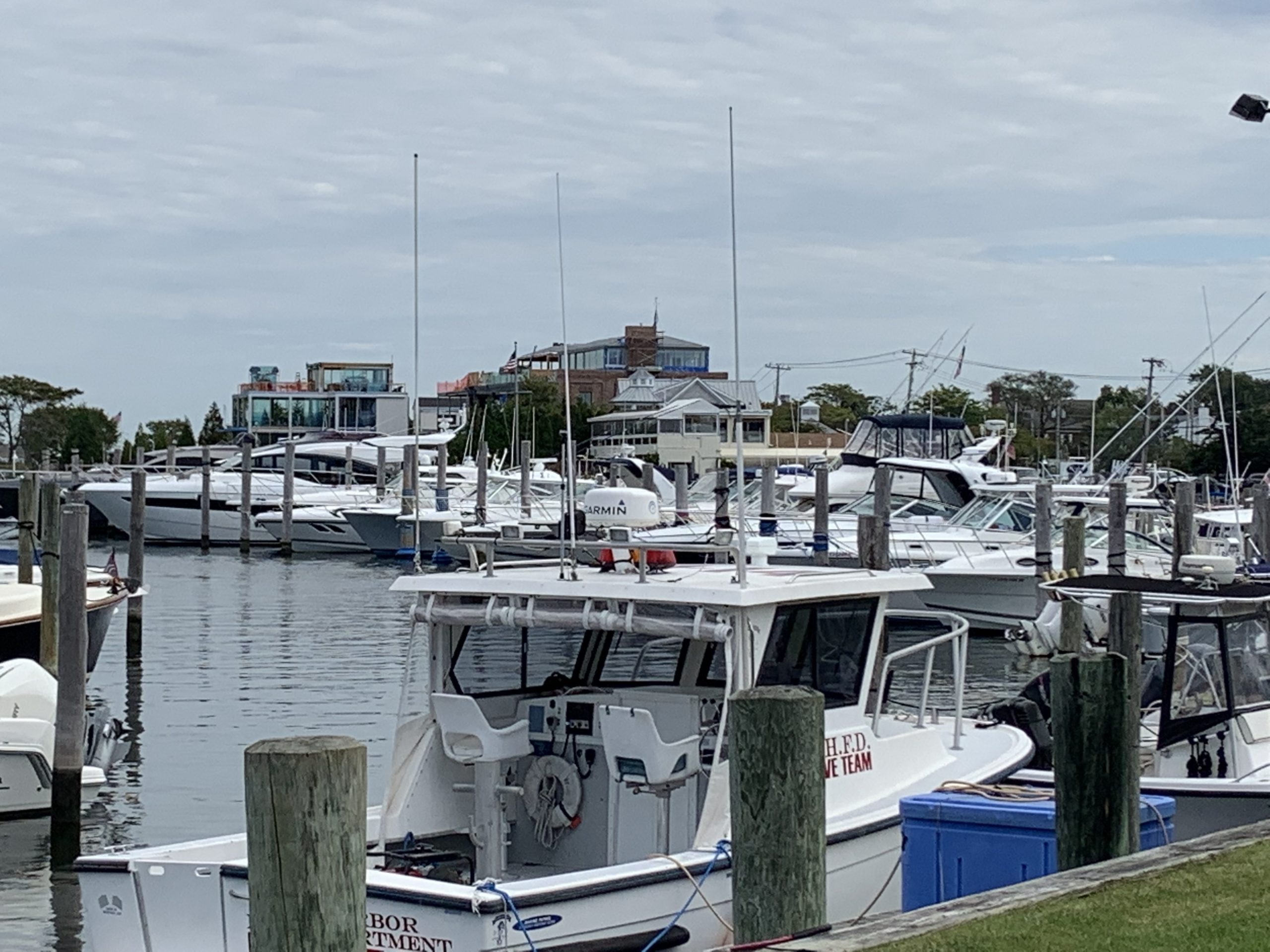
The Sag Harbor Village Board spent the better part of a nearly hourlong work session on October 27 trying to clear up misconceptions and concerns about the village’s proposed waterfront overlay district.
The proposed zoning code amendments, which are intended to safeguard the village waterfront from overdevelopment, have been revised in recent weeks by Mayor Jim Larocca and will be the subject of a formal hearing on November 9.
Of particular concern to audience members was the new proposed authority of the Village Board to issue a special exception use permit for developments larger than 3,500 square feet in the new waterfront district.
Elizabeth Gilbert of Save Sag Harbor worried that the Village Board wanted to give itself the authority to overturn decisions of the Zoning Board of Appeals or other village regulatory boards.
But Larocca and Village Attorney Elizabeth Vail took pains to explain that the goal was simply to create another line of defense against overdevelopment, not infringe on the authority of the village’s other regulatory boards.
“I want to emphasize that nothing in here diminishes or changes the procedures that are now in place,” Larocca said.
Vail explained that the trustees’ role would not be like that of a higher court that can overturn a lower court’s decision. “It’s not appellate review. It’s not the reviewing board of every other board,” she said of the Village Board. “It’s just another added layer of zoning review.”
If an applicant proposes a development that would exceed 3,500 square feet in the new waterfront district, that proposal would go before the Planning Board, Board of Architectural Review and Historic Preservation, and possibly the Zoning Board of Appeals and Harbor Committee before being reviewed by the Village Board.
If the ZBA denied requests for variances or the ARB opposed the design plans, the applicant would not be able to go to the Village Board in a bid to overrule those other boards’ decisions. Conversely, if all the other regulatory boards approved the application, but the Village Board denied the request for a special exception permit, the application would also be denied.
Hilary Loomis, a co-director of Sag Save Harbor, asked the board a number of questions about the new version of the proposed law that were compiled by fellow board member Randy Croxton, an architect.
While she said Croxton agreed with expanding the waterfront district’s boundaries to include the Cormaria retreat house and the marinas on Redwood Road, he did have concerns about a change that would allow buildings zoned Village Business to be three stories, or 35 feet, tall.
She also asked about required sideyard setbacks, which will be set at a minimum of 15 feet or 20 percent of the total lot width. Village planning consultant Kathryn Eiseman said another change would require an improved pedestrian access at least 10 feet wide for some applications.
Susan Mead, speaking as an individual, urged the board to impose limits on the size of retail uses permitted in the Office District to avoid creating competition for established Main Street businesses. She also urged the board to be wary of overdevelopment in that district because it consisted of filled wetlands with a high water table that could cause flooding to existing buildings if the water is displaced by new foundations.
Finally, she said a provision that would require a developer with a with a project of more than 3,500 square feet spread over more than one lot to obtain a permit from the Village Board would not work because it would be too simple to transfer ownership to other entities. “You are attempting to see their master plan,” she said, “but it won’t achieve what you want.”
Steve Brennan of the Sag Harbor Yacht Club said the village zoning map for the waterfront district incorrectly included the yacht club in the district. “It’s the only dock I’m aware of that is considered to be within Sag Harbor zoning,” he said. “We’ve asked for years for this to be corrected, but it never has been.”
Nica Strunk, a Southampton attorney, representing Patrick Malloy, the owner of the Waterfront Marina and other commercial property at 1 Bay Street, also appeared before the board.
She said the Malloy family was obviously interested in what the village was considering and shared many of its goals for protecting the waterfront, but was concerned about the potential impacts to their property.
Although she asked if the Village Board would approve a second-story glass-walled walkway to meet its public access requirements, she said afterward that she was not referring to a specific development plan.